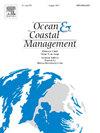利用深度学习技术实时跟踪沿海地区的休闲船
IF 4.8
2区 环境科学与生态学
Q1 OCEANOGRAPHY
引用次数: 0
摘要
为了有效地管理和保护沿海生态系统,准确的海洋娱乐活动空间数据至关重要。本研究介绍了一种基于深度学习的系统,该系统设计用于使用相机实时检测和跟踪沿海环境中的休闲船只。我们对YOLOv5和YOLOv7两种目标检测和分类算法进行了微调和评估,用于海洋保护区(MPAs)内的自动、实时船舶检测、分类和定位。此外,我们优化了两种多目标跟踪算法,StrongSORT和ByteTrack,用于在连续时间框架内跟踪检测到的船只的运动。我们在NVIDIA Jetson平台上实现了最佳组合(YOLOv5和ByteTrack),这是一种专门为人工智能应用设计的边缘计算设备,在各种模拟硬件配置中进行了全面的基准测试,以确定其最小的计算和功耗需求。然后,我们将系统定位在沿海悬崖上,俯瞰部分海洋保护区的休闲渔业,进行了现场测试。这些测试旨在验证系统的实时操作可行性,并获得精确的船舶轨迹。结果证实了该系统在真实海洋环境中的有效性和数据收集能力。最后,我们评估了将图像轨迹转换为地理坐标的两种相机校准技术:用于精确视角调整的单应性投影变换和基于神经网络的创新方法。我们开发的系统可以显著提高海洋保护区内的监测和监视能力,产生休闲捕鱼努力的时空数据,这些数据可以很容易地转移到其他案例研究中。本文章由计算机程序翻译,如有差异,请以英文原文为准。
Real-time tracking of recreational boats in coastal areas using deep learning
To effectively manage and conserve coastal ecosystems, accurate spatial data on marine recreational activities are crucial. This study introduces a deep-learning-based system designed for real-time detection and tracking of recreational vessels in coastal environments using cameras. We fine-tuned and evaluated two object detection and classification algorithms, YOLOv5 and YOLOv7, for automated, real-time vessel detection, classification and positioning within Marine Protected Areas (MPAs). Additionally, we optimized two multiple object tracking algorithms, StrongSORT and ByteTrack, for tracking the movements of the detected vessels in sequential timeframes. We implemented the best combination (YOLOv5 and ByteTrack) on an NVIDIA Jetson platform, an edge computing device specifically designed for AI applications, conducting thorough benchmarking across various simulated hardware configurations to determine its minimal computational and power needs. Then, we conducted field tests by positioning the system on a coastal cliff overlooking a recreational fishery located in a partial MPA. These tests aimed to validate the system's real-time operational viability and to acquire precise vessel trajectories. The results confirmed the system's efficacy and its data collection capabilities within a real marine environment. Finally, we evaluated two camera calibration techniques for converting image trajectories to geographic coordinates: a projective transformation with homography for accurate perspective adjustment, and an innovative neural network-based approach. The system we have developed could markedly enhance the monitoring and surveillance capabilities within MPAs, generating spatial-temporal data of recreational fishing effort that can be easily transferred to other case studies.
求助全文
通过发布文献求助,成功后即可免费获取论文全文。
去求助
来源期刊

Ocean & Coastal Management
环境科学-海洋学
CiteScore
8.50
自引率
15.20%
发文量
321
审稿时长
60 days
期刊介绍:
Ocean & Coastal Management is the leading international journal dedicated to the study of all aspects of ocean and coastal management from the global to local levels.
We publish rigorously peer-reviewed manuscripts from all disciplines, and inter-/trans-disciplinary and co-designed research, but all submissions must make clear the relevance to management and/or governance issues relevant to the sustainable development and conservation of oceans and coasts.
Comparative studies (from sub-national to trans-national cases, and other management / policy arenas) are encouraged, as are studies that critically assess current management practices and governance approaches. Submissions involving robust analysis, development of theory, and improvement of management practice are especially welcome.
 求助内容:
求助内容: 应助结果提醒方式:
应助结果提醒方式:


